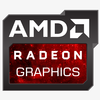The revised FreeSync standards now introduce a minimum refresh rate requirement across all tiers, contingent upon the display's horizontal resolution. For the basic FreeSync tier, displays with a horizontal resolution below 3440 pixels must now support at least a 144Hz refresh rate. This applies specifically to 1920x1080 and 2560x1440 monitors. Displays exceeding this resolution are exempt from the refresh rate criteria, allowing for high-resolution monitors, such as those with 3840x2160 pixels, to qualify without adhering to the 144Hz minimum.
For the mid-tier FreeSync Premium, the requirement escalates, demanding at least a 200Hz refresh rate for displays under 3440 pixels in horizontal resolution. Monitors with higher resolutions need to support a minimum of 120Hz to meet the Premium standards. This means that both standard and ultrawide high-definition monitors must achieve these higher refresh rates to attain FreeSync Premium certification.
The top-tier FreeSync Premium Pro retains the resolution and refresh rate requirements of the Premium category but adds the necessity for HDR support, further elevating the performance and quality standards for the highest certification level.
These updated requirements aim to phase out lower-performance displays from receiving FreeSync certification, ensuring that users have access to higher-quality monitors that offer a superior gaming experience. This shift not only aligns with the current trends in monitor technology but also sets a new benchmark for display performance in the gaming industry, reflecting AMD's commitment to improving visual fidelity and responsiveness in gaming monitors.

